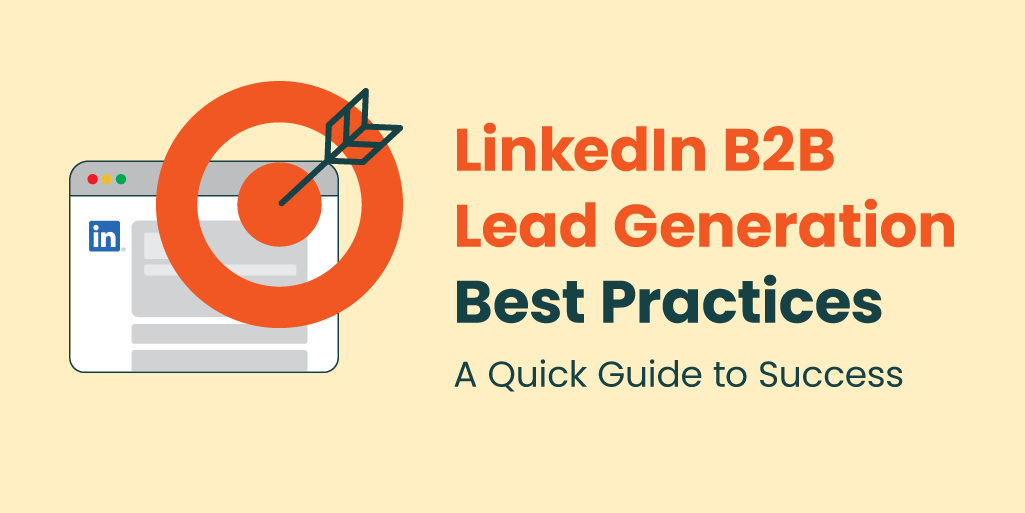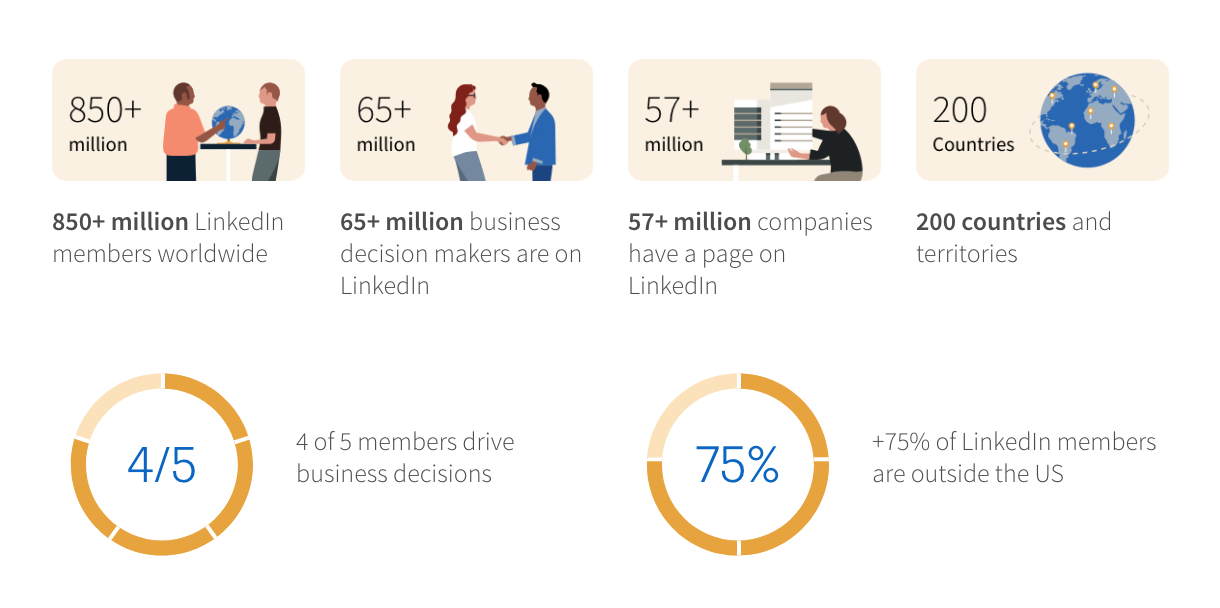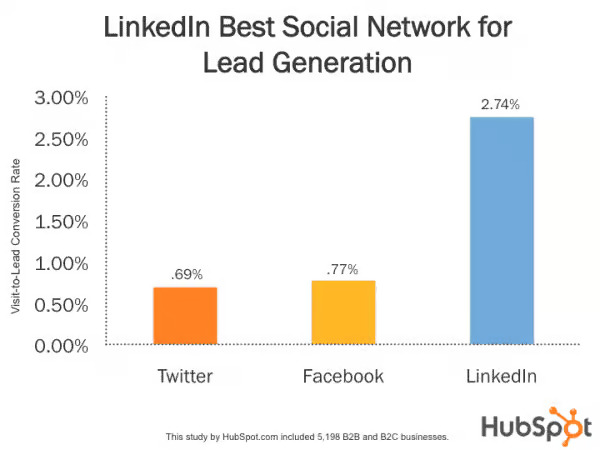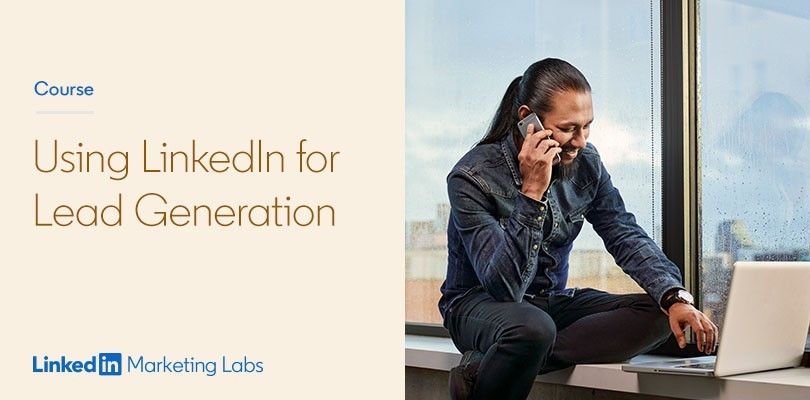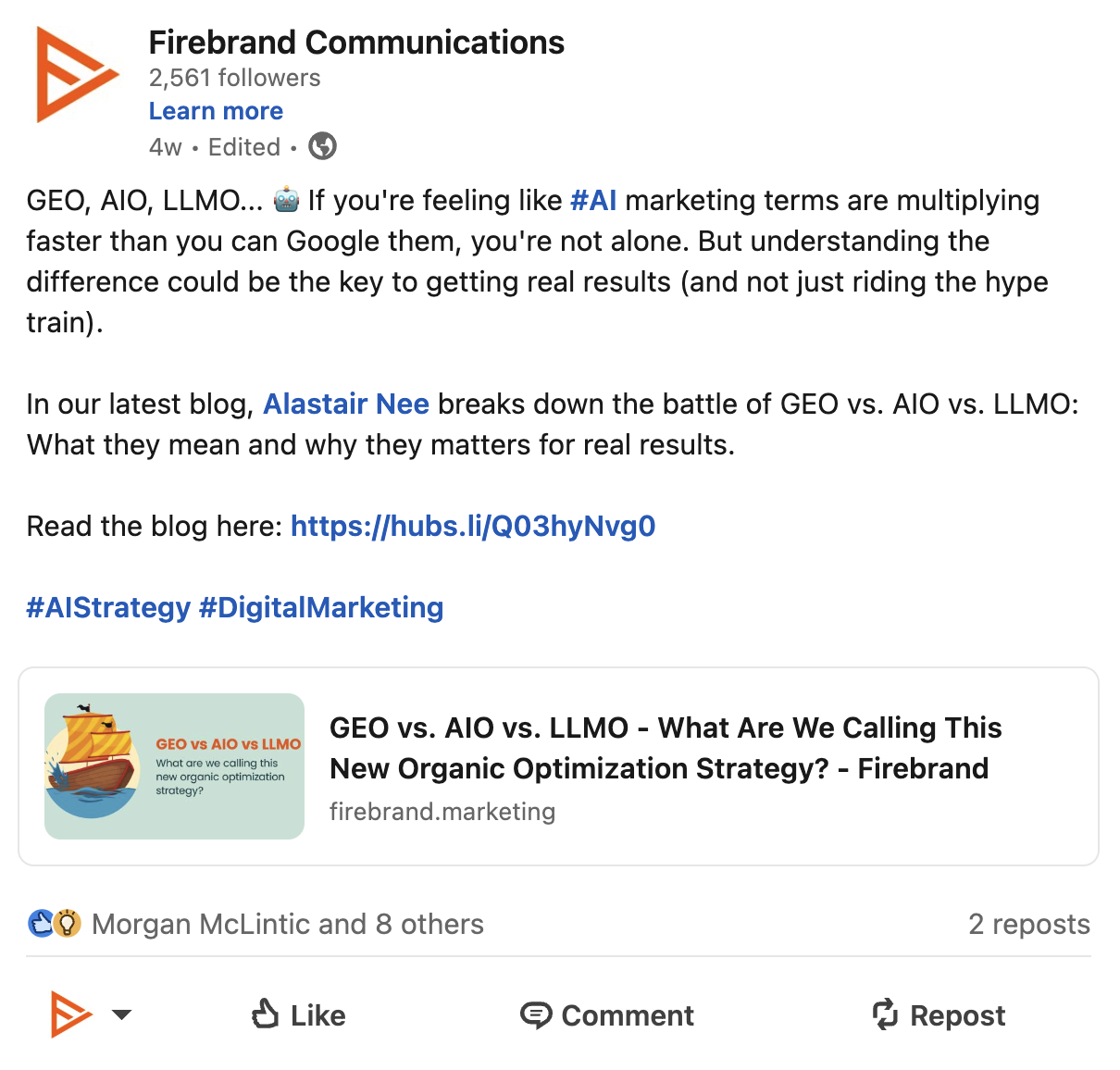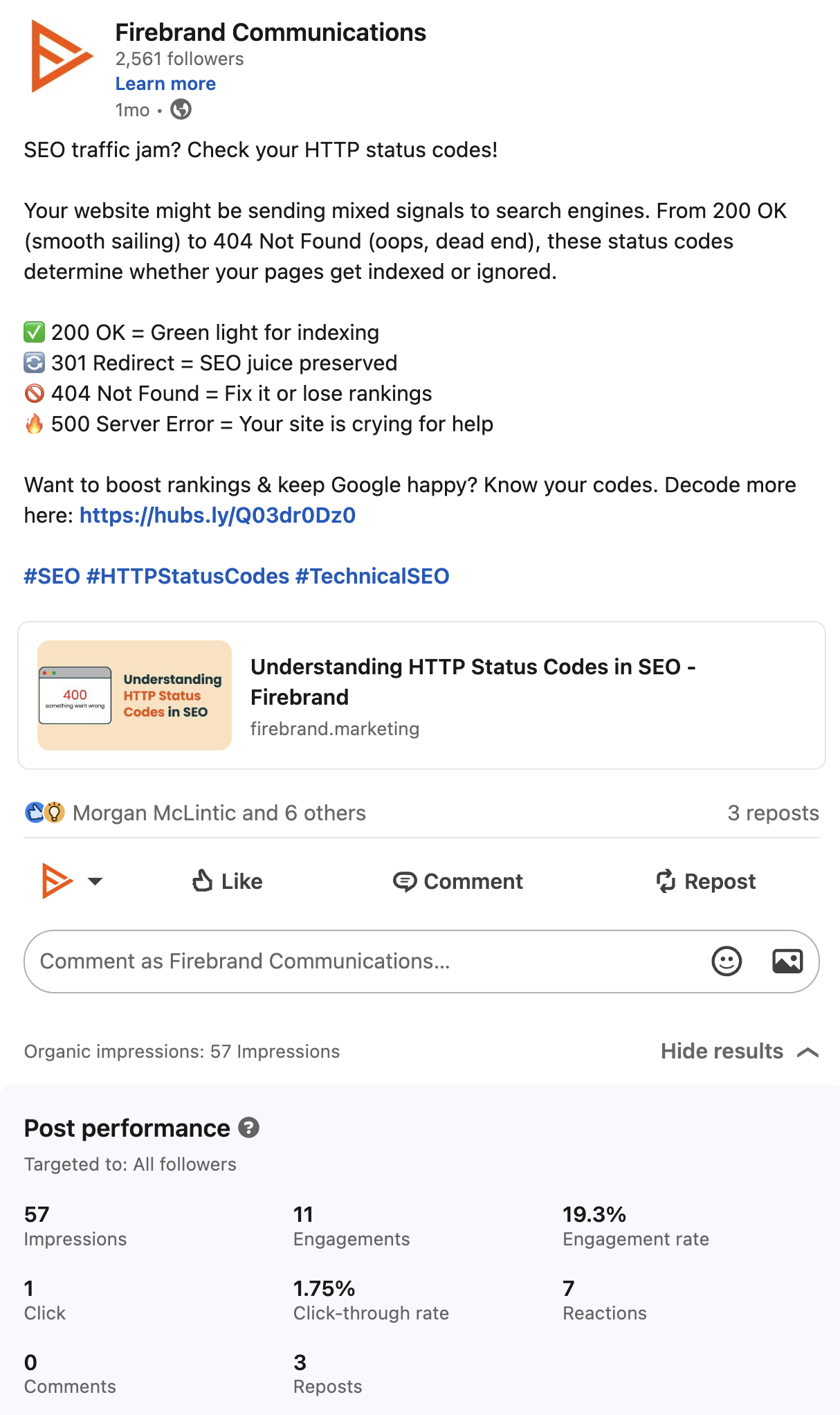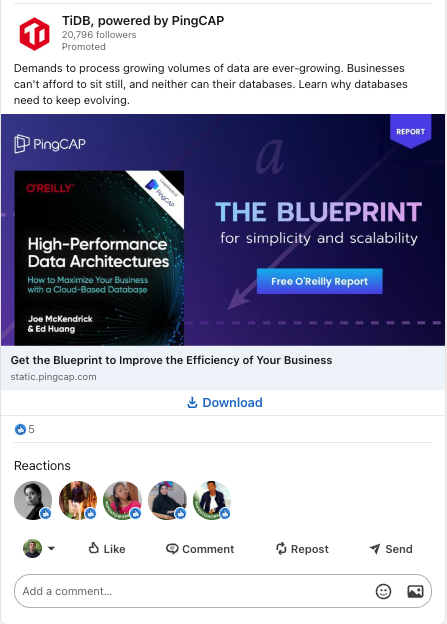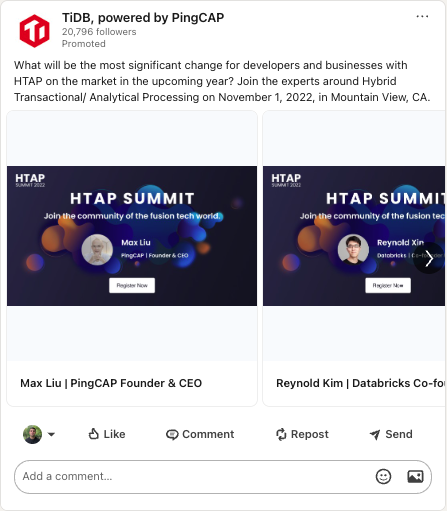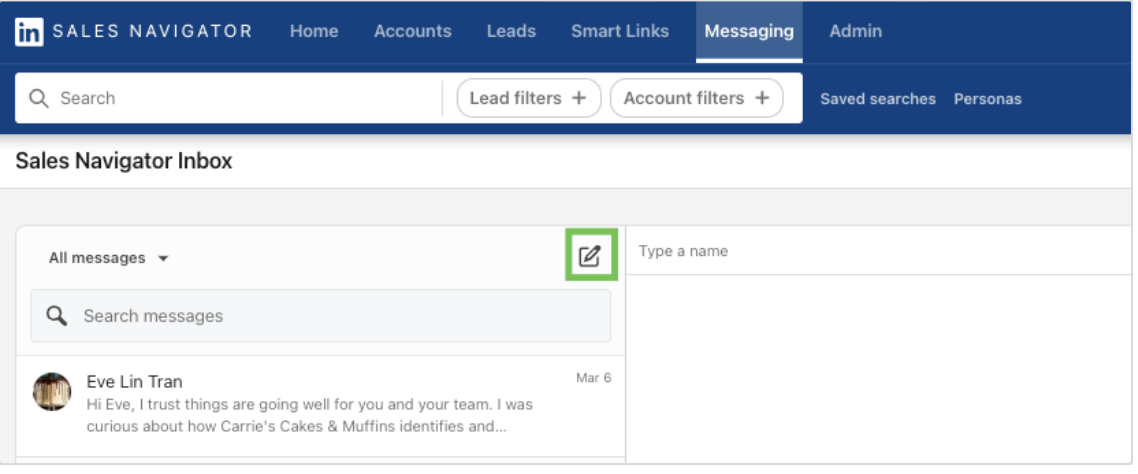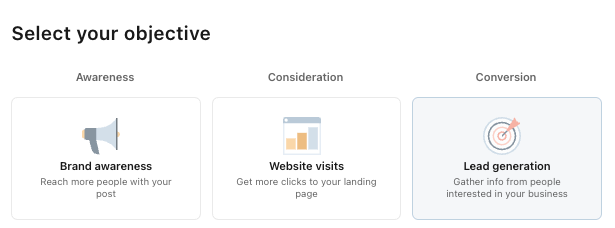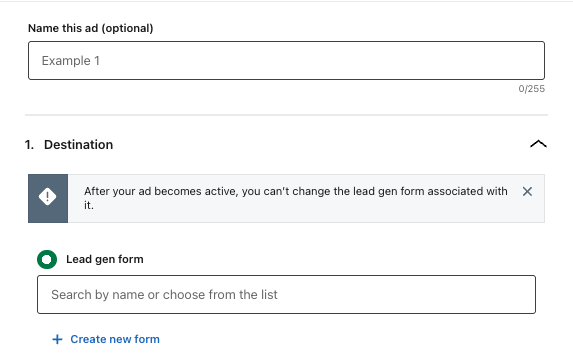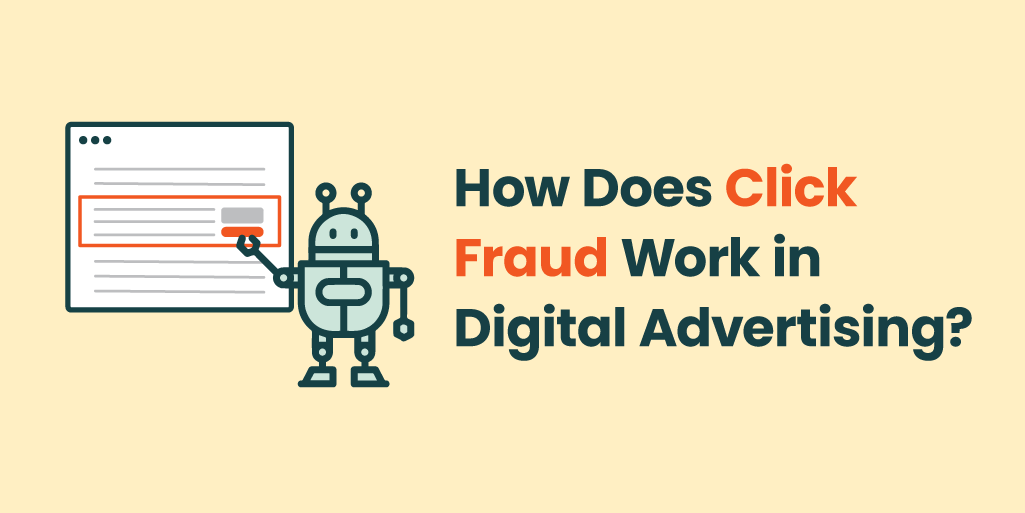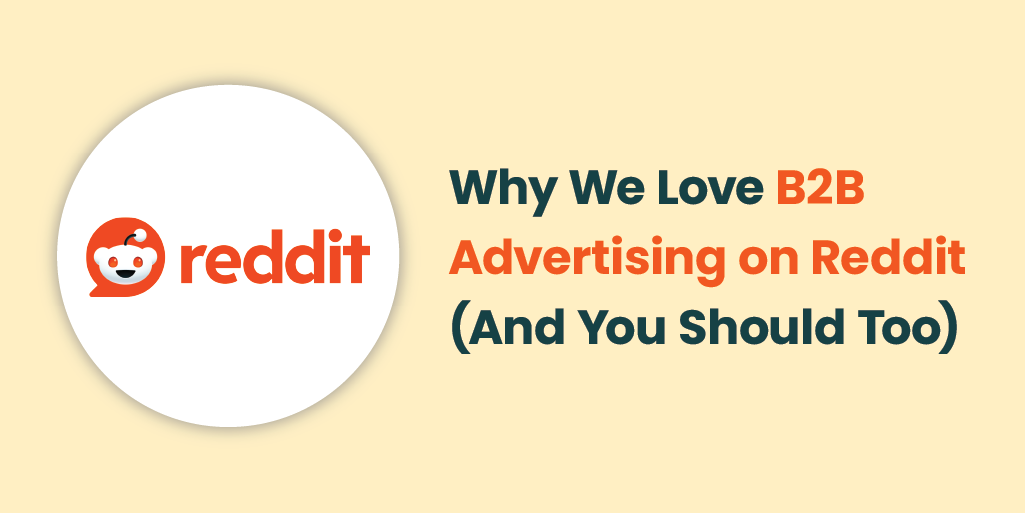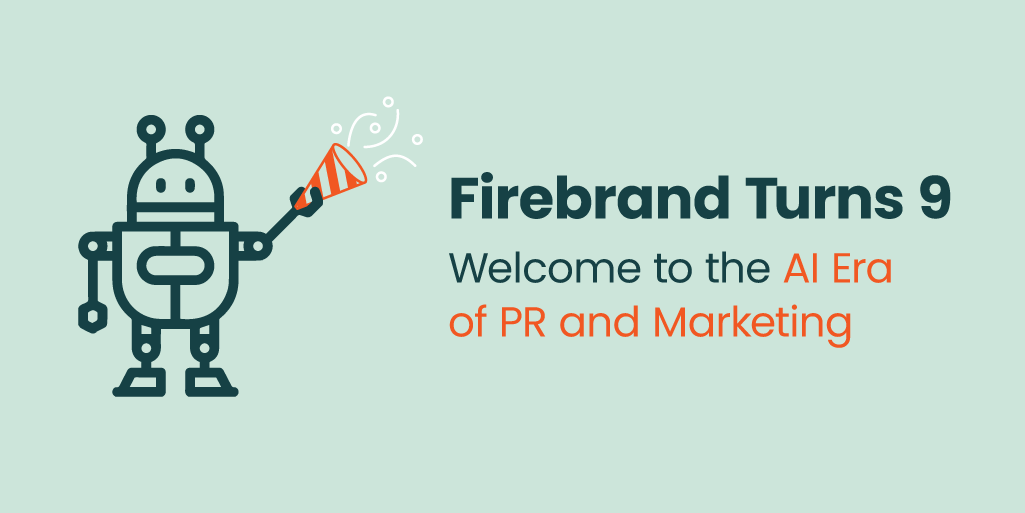LinkedIn is one of the most uniquely positioned platforms for B2B marketers when it comes to lead generation, combining scale, professional context, and targeting precision in a way no other ad platform does. As a network, LinkedIn has surpassed 1 billion users worldwide, but what’s more important than the raw number is who those users are. LinkedIn offers unparalleled access to key stakeholders, with over 65 million business decision-makers, 10 million C-level executives, and 17 million opinion leaders globally — making the platform a goldmine for B2B marketers looking to get in front of people with real purchasing power.
With over 80% of B2B leads generated through social media platforms, LinkedIn plays an unparalleled role in facilitating business connections and opportunities:
- When compared to other paid social platforms, traffic from LinkedIn achieves a 2.74% visitor-to-lead conversion rate, which is 277% higher than Twitter’s 0.69% and Facebook’s 0.77%.
- LinkedIn lead gen forms, which autofill user information, like name, email address, and job title, directly on-platform, have been reported to convert at rates 2–3 times higher than traditional landing page forms.
- These features, combined with a professional user base actively seeking industry insights and solutions, make LinkedIn a strategic choice for B2B companies looking to enhance their lead generation efforts.
In this blog post, we’ll dive into how B2B companies can effectively leverage LinkedIn’s unique features to drive lead generation and achieve their marketing objectives. Let’s look at why it works so well — and explore LinkedIn lead generation best practices that align with how modern B2B buyers research, evaluate, and engage with brands.
What is LinkedIn Lead Generation?
LinkedIn B2B lead generation refers to using the platform’s tools and content formats to attract and capture interest from potential B2B buyers. Whether through organic posts, paid campaigns, or native features like lead gen forms, LinkedIn gives B2B marketers the ability to reach the right people, at the right time, with the right message. The value is in the context: your audience is already in a business mindset, and you have targeting options that go far beyond what other social or advertising platforms offer. It’s one of the most efficient ways to reach practitioners and decision-makers.
Lead generation on LinkedIn is about more than just running ads or collecting form fills. It’s the process of using the platform to build meaningful connections with your target audience — from a full range of personas inside your ideal customer profile (ICP). That might start with thought leadership content, evolve into direct outreach or ad engagement, and lead to qualified conversations. With lead gen on LinkedIn, you’re showing up where they go to stay informed, find solutions, and vet potential partners.
Primary Methods of Generating Leads on LinkedIn
In general, the main ways to generate leads on LinkedIn fall into three core categories: organic content, paid campaigns, and direct outreach. Here’s a quick breakdown of each:
1. Organic Content
This method primarily depends on your company page or personal profiles to organically share thought leadership, industry insights, customer success stories, and timely commentary. Content that educates or adds value builds credibility and keeps you top of mind with your ICP. Over time, this draws in leads who are already aligned with your expertise. That said, reach for organic posts, particularly from company pages continues to decline. According to recent data, average reach from company pages has dropped from 7% to just 2% of total followers. This method is best for long-term relationship building, and is generally less effective in immediate inbound LinkedIn B2B lead generation.
Examples include: LinkedIn articles, carousel posts, videos, polls, and engagement in relevant comments.
2. LinkedIn Ads & Lead Gen Forms
Because organic reach can be relatively low, a paid LinkedIn strategy is critical to getting your thought leadership and value propositions seen by your target audience. LinkedIn’s Campaign Manager allows you to run highly targeted ads to specific audience segments (e.g., job title, industry, member groups, member interests etc.). When paired with LinkedIn lead gen forms, which auto-fill user details, you can capture high-quality leads without asking them to leave the platform. This method is best for scalable, campaign-based lead acquisition with clear ROI tracking.
Examples: Sponsored Content (Single Image, Carousel, or Video Ads), Conversation Ads, Message Ads (InMail – do not support lead gen forms), and Dynamic Ads (Follower, Spotlight – do not support lead gen forms)
Lead Gen Form Single Image Ad Example
Carousel Ads Example
3. Direct Outreach
LinkedIn is a powerful tool for personalized outreach — especially when combined with a strong content presence. Reaching out via InMail or connection requests works best when it’s tailored, relevant, and not overly salesy. Use tools like LinkedIn Sales Navigator to build and prioritize target lists. Sales Navigator can help both build prospect lists from scratch and identify the right contacts within companies on your existing target account list (TAL). By uploading your TAL, you can surface decision-makers and discover new stakeholders within priority accounts. This method is best for targeting high-value accounts and initiating sales conversations directly.
Examples: Manual or automated connection requests, follow-ups, and account-based outreach.
5 Tips for Generating Business Leads on LinkedIn with High-Impact Ads
So how do you turn LinkedIn’s potential into pipeline? It starts with aligning your approach to how B2B buyers actually engage on the platform. For our purposes, we will focus on LinkedIn advertising specifically, and best practices for how to generate B2B leads on LinkedIn via Campaign Manager. Here are five LinkedIn lead gen practices to get the best use of your budget and target audience.
1. Use On-Platform Lead Gen Forms to Minimize Drop-Off
When the goal is lead capture, keep it on-platform. Because LinkedIn lead gen forms autofill with a user’s profile data, it reduces the steps required to convert. Studies have shown that the average native lead gen form conversion rate is 13%, much higher than the average landing page conversion rate of 4.02%. They consistently outperform traditional landing pages in both conversion rate and cost per lead.
For example, when running a lead gen campaign leveraging a gated asset / lead magnet, set up your campaign objectives to “Lead Generation” instead of “Website Conversions”. This will allow you to leverage lead gen forms on your ad formats, and keep users on-platform when engaging with ads.
From there, select a “Lead gen form” when creating an ad:
Best practice tip: Create one lead gen form for each campaign for the most accurate tracking and visibility.
There are best practices to keep in mind when creating LinkedIn lead gen forms themselves:
-
- Do not include too many required fields
- Typically, name, email and company are the three most important
- Include LinkedIn Profile URL as a field
- This autopopulates for the user and can provide essential information for Sales and Marketing
- Include Hidden Fields to track UTM information
- Do not include too many required fields
2. Refine Audience Targeting
LinkedIn’s targeting has many different parameters, but can also be misused if not done properly. Focus on precision and segmenting by campaign type – layering in job function, seniority, company size, industry, and interests on top of broader signals. Do not be afraid of using exclusion targeting to eliminate competitors or irrelevant segments, and keep your audience size between 50K–500K for optimal delivery for most lead gen campaigns.
In addition, do not be afraid to target Top of Funnel – especially when beginning your lead gen journey. You can introduce your brand to the right people early in their buying journey, even if they’re not actively in-market yet. Offering value through thought leadership or gated resources builds trust and creates warmer audiences for future retargeting, all while positioning your company as a credible partner.
3. Lead with Solutions, Not with Features
B2B users typically do not come to LinkedIn to be sold to — they come to learn, solve problems, and stay ahead in their roles. That means your ad creative needs to earn attention by offering solutions to common problems your target audience encounters, not pushing product features. Do not ask users to marry you on first contact! Focus on value-driven offers like whitepapers, guides, assessments, benchmarks or checklists that help your audience do their job better or make smarter decisions.
The headline and copy should speak directly to their challenges or goals, not your product. Instead of “Demo our platform and see XYZ” try “Guide to How B2B teams are doing XYZ.” Especially when leveraging LinkedIn lead gen forms in ad formats, this kind of solution-first approach lowers friction, builds credibility and consequently improves ad performance.
When it comes to direct product or service ad formats that are more “pitchy”, we recommend serving these types of ads when leveraging remarketing or specifically tailored ABA (Account-Based Advertising) strategies. Typically on LinkedIn, engagement down the funnel can be effective in gauging interest from more qualified prospects.
4. Test Everything: Let the Data Guide Decisions
Effective LinkedIn B2B lead generation is not a “set it and forget it” play. Instead, it is a performance channel whose algorithm rewards iteration. To consistently improve results, you need to test across three key areas: creative, offer, and audience.
On the creative side, experiment with different headline styles (questions vs. statements), image types and ad formats (product vs. people and single image vs. video), and CTAs (“Download” vs. “Access Now”). For offers, compare various formats like eBooks, webinars, and case studies as each will appeal to different buying stages and personas.
In regards to audiences, test variables like job title vs. job function, company size segments, and even overlay member interests. With the introduction of A/B tests on LinkedIn, you can structurally test and measure variables. Over time, you will build a data-backed strategy for what resonates with your ICPs and reduce your cost per lead.
5. Integrate LinkedIn Leads for Nurturing
A LinkedIn lead submission is just the beginning, not the end-game. The speed and quality of your follow-up can make or break the path to pipeline. LinkedIn leads go cold quickly, so aim to respond within 24 hours, ideally sooner. One way to stay on top of this is CRM automation. Integrate your LinkedIn lead gen forms with your CRM or marketing automation platform. We suggest using automation to send leads directly into a tailored email nurture stream that aligns with the offer they engaged with. If they downloaded a guide, follow up with related insights, customer success stories, or invitations to deeper-dive content like webinars or ROI calculators.
The goal is to build trust over time by showing up with relevant, helpful content, not jumping straight to a sales pitch. A well-structured nurture sequence keeps your brand top of mind, moves leads through the funnel, and makes your eventual outreach feel like a natural next step instead of a cold follow-up.
Calling in Reinforcements to Take LinkedIn B2B Lead Generation to the Next Level
Even with the right strategy in place, LinkedIn lead generation is a complex puzzle. Getting campaigns live might seem relatively straight forward but identifying the correct fixes and optimizations can often lead to poor conversion rates and wasted spend.
Our expert PPC team at Firebrand can help you build campaigns set up for success on launch — segmented to multiple personas, testing and optimizing creative at scale, and syncing leads with sales-ready workflows. Whether it’s refining your offer strategy, leveling up targeting, or ensuring every lead is nurtured properly, our hands-on team can help turn good campaigns into repeatable, scalable demand generation engines.
Simply reach out or learn more about our PPC audit process for more information based on your business-specific needs. We’re here to help you crush your marketing goals!
About the Author
Arman Khayyat is a Bay Area–based senior digital marketing leader and Account Supervisor at Firebrand, where he helps B2B startups and scaleups accelerate growth through performance-driven programs. He leads client programs across PPC, SEO, and marketing analytics—helping high-growth startups and enterprise tech brands scale efficiently. His expertise spans everything from paid search architecture and technical SEO audits to funnel analytics and conversion optimization.
Prior to joining Firebrand, Arman held digital marketing leadership roles at B2B technology firms and agencies, bringing over a decade of experience in growth marketing and performance media. Arman frequently writes about B2B lead generation, search strategy, and the evolving role of LLMs and Generative Engine Optimization (GEO) in discoverability. Passionate about the evolving search landscape, he’s currently exploring the impact of LLMs and Generative Engine Optimization (GEO) on organic discoverability.
Outside of work, you’ll find him experimenting with AI tools, perfecting his espresso technique, or watching is favorite sports teams.
Follow Arman on LinkedIn or explore more on Firebrand’s blog.

